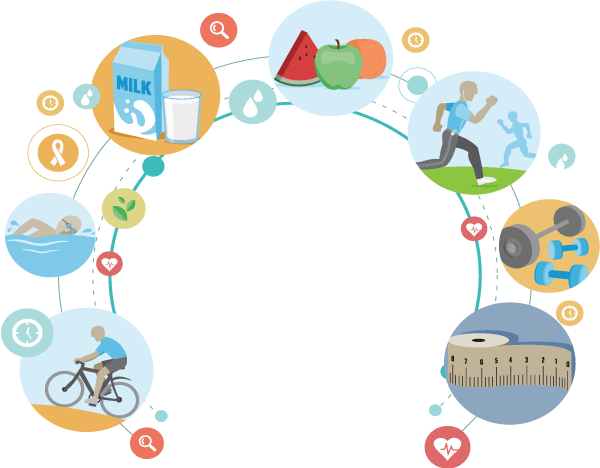Building Your Residency Rank List
Cameron Justice, OMS-IV, Pacific Northwest University of Health Sciences College of Osteopathic Medicine
EMRA MSC Osteopathic Coordinator, 2019-20
As I enter the final weeks before Match Day on March 20, I feel a sense of relief at having certified my National Residency Matching Program (NRMP) Rank Order List (ROL). I spent some time reflecting on my rank list decisions and the motivations behind them and wanted to share them with those of you who will be drawing up the same list next January.
What and When?
The NRMP opens for medical students to register around November. It is a good idea to sign up early so you are ready when the time comes. Registration costs an initial $85, which will allow you to rank up to 20 programs before having to pay extra fees. Once registered, you will be ready to rank when the ROL opens, which is typically in January. ROLs are due by the end of February, so you have at least a month to finalize your ROL, which can be changed and recertified as many times as you wish until the deadline.
My Tip: Register early and get a certified ROL completed as soon as it opens. Your first ROL doesn’t have to be perfect but make sure your top choice is where it should be. You can continue to adjust and recertify up until the deadline. You don’t want to risk having a blank or uncertified ROL when the deadline passes, so make sure you certify your ROL after every change.
How It Works
The Match is an automated system provided through the NRMP, which is designed to weight the applicants preference in order to place the applicant where they want to be. This is very well illustrated in the NRMP video about their algorithm. I would recommend watching this if you have not done so already. The Match does a good job of honoring candidates’ rankings and places the majority of candidates in their top choice programs, as illustrated by the NRMP 2019 Main Residency Match Results and Data Report [PDF]. More than 80 percent of applicants will match to one of their top four choices, with 50 percent matching to their number one choice.
My Tip: Rank where you really want to go, where you feel you will be happy. Don't try to “Play the Game,” strategizing where you think you have the best chance of matching. And try not to agonize over every little spot. Decide your top four or five spots and then decide if there are places you really did not like and place them at the bottom, or perhaps don’t rank them if you would prefer not to match rather than to go to that program. As for the rest, just fill them in the middle any way you want. There really is no need to add to your stress by making the middle perfect. They are all in the middle likely because you would be equally happy to be at any of them, and more than likely you will end up at one of your top three programs anyway.
How Many Ranks?
The NRMP match data indicates that ranking 12 programs will give about a 95 percent chance of matching. That number is still around 90 percent with seven to eight ranks. While it is helpful to look at the numbers to get the lay of the land, remember that statistics apply to the group of applicants as a whole, not the individual; keep in mind your unique applicant picture. Be honest and realistic about your application and don't get stressed by comparing yourself to your peers. You may only need to have six or eight programs on your rank list, while others may need ten to 15. Others may need even more. My list is very different than my classmates’ lists and that is okay, because my list is right for me. This is where having a mentor is hugely helpful. If you haven't already, go ahead and get paired with one of our incredible resident mentors via the EMRA Student-Resident Mentorship Program for individualized guidance.
My Tip: The ROL is a personal decision, one that should be made for yourself and your significant other and/or family. Here are some factors I found personally important, in order of importance:
- Percentage osteopath (for my fellow DO applicants)
- Gut feeling/connection
- Perceived resident happiness and competency
- Program length
- Practice setting
- Opposed vs unopposed
- Electives/extracurriculars
- Program size vs volume
- Local and national leadership opportunities/support from program admin
- Number of critical care weeks
- Graduated autonomy
- Percent off service
- Mid-level practice in the ED
- Pay/benefits
- Location
Your list of priorities is likely different. Just ensure you are being honest with yourself and focusing on the aspects of the programs that will really impact your training. Remember that residency is a time-limited engagement, but one that will help shape the type of physician you will be for the rest of your career.
Be Flexible
It is helpful to have an idea of what factors are important to you when heading into interview season so you can start building a dynamic ROL as you go. Your priorities may change as you get further through the process, and that is okay too. Just rewrite your list of priorities and look at things again through your new lens. It is important to continue to reevaluate as new information becomes available, just as we do when managing undifferentiated patients in the ED. Be flexible and open to this dynamic process. It can be stressful but it is also fun and exciting. Remember: you are looking for the best fit for you. Honor the things that you value most and avoid the trap of comparison.
For some more incredible information about this topic and many others, take a look at the EMRA/CORD Student Advising Guide. To all of you MSIIIs out there: keep it up, good luck on VSAS applications, and enjoy your away rotations! To my fellow MSIVs: good luck in The Match! Looking forward to seeing you all on the other side as fellow EM PGY-1s!
Useful Resources:
- NRMP Fees: http://www.nrmp.org/match-fees/
- NRMP The Match Algorithm: http://www.nrmp.org/matching-algorithm/
- NRMP Results and Data: 2019 Main Residency Match: https://mk0nrmp3oyqui6wqfm.kinstacdn.com/wp-content/uploads/2019/04/NRMP-Results-and-Data-2019_04112019_final.pdf
- EMRA Student-Resident Mentorship Program: https://www.emra.org/students/advising-resources/student-resident-mentorship-program/
- EMRA/CORD Student Advising Guide: https://www.emra.org/books/msadvisingguide/msag/







